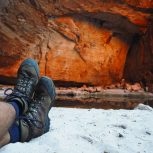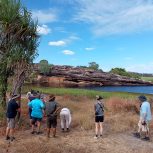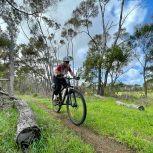Kakadu National Park: Tale of Two Seasons
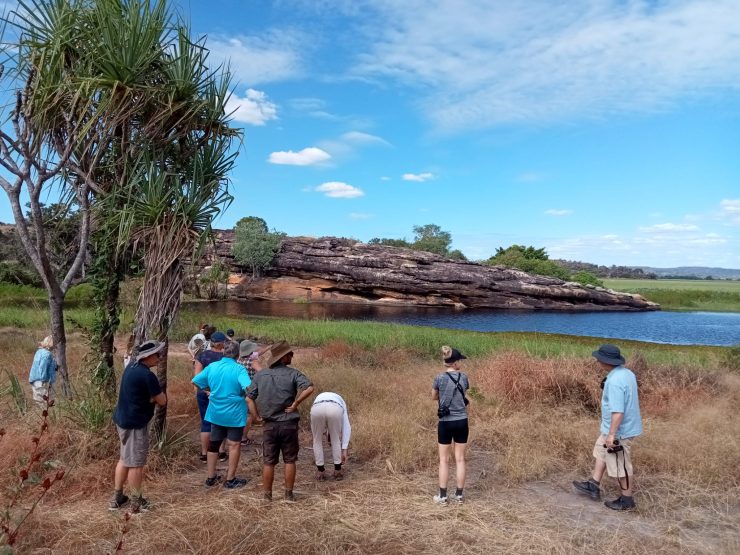
Kakadu National Park: Tale of Two Seasons
Posted on
Kakadu National Park is overflowing (literally) with diverse landscapes and unique experiences. This UNESCO World Heritage Site in the Top End region is the place where anyone can grab their fill of stunning gorges (like the famous Katherine Gorge), important ecosystems, iconic Australian wildlife, and ancient rock art, which attracts visitors with its beauty and cultural significance.
Kakadu’s beauty is like two sides of the same coin. It’s showcased in two distinct seasons (dry and wet), each providing a different perspective and each with its pros and cons.
Whatever season you choose to visit Kakadu, both will give you amazing experiences (one may just require you to wear a raincoat and be on the lookout for crocs).
The Dry Season (April to October)
Our Inspiration Outdoors tours are timed perfectly to coincide with Kakadu’s dry season, a period when the landscape transforms into a vast, accessible wilderness waiting to be explored. Warm, sunny days (yes the humidity is still there but nothing like wet season) and cool nights characterise this season, offering ideal conditions for hiking through the park’s dramatic landscapes.
The reduced humidity and cooler temperatures make hiking a pleasure, allowing leisurely exploration and getting up close. While you’ll be sweating something severe, cool neck scarves soaked in the waterholes along the way will make it all that more bearable
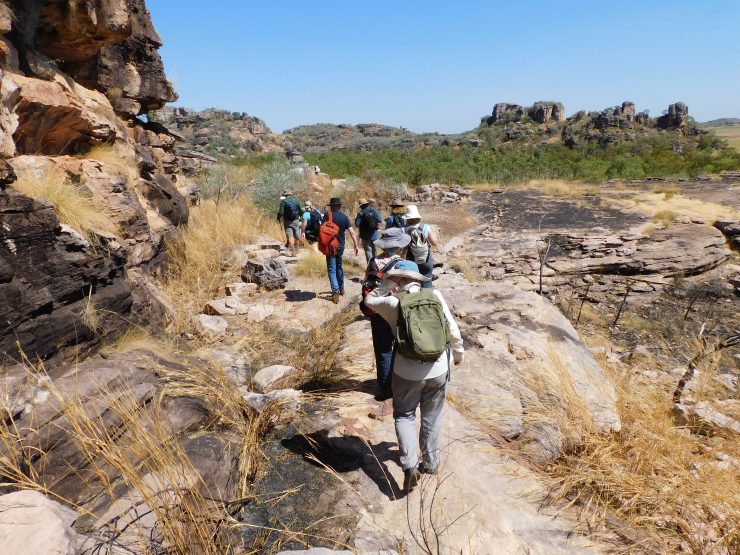
Highlights of the Dry Season:
Spectacular Gorges and Waterholes:
Walk through the awe-inspiring gorges of Kakadu, Nitmiluk, and Litchfield National Parks. The reduced humidity and cooler temperatures make hiking a pleasure, allowing leisurely exploration and getting up close.
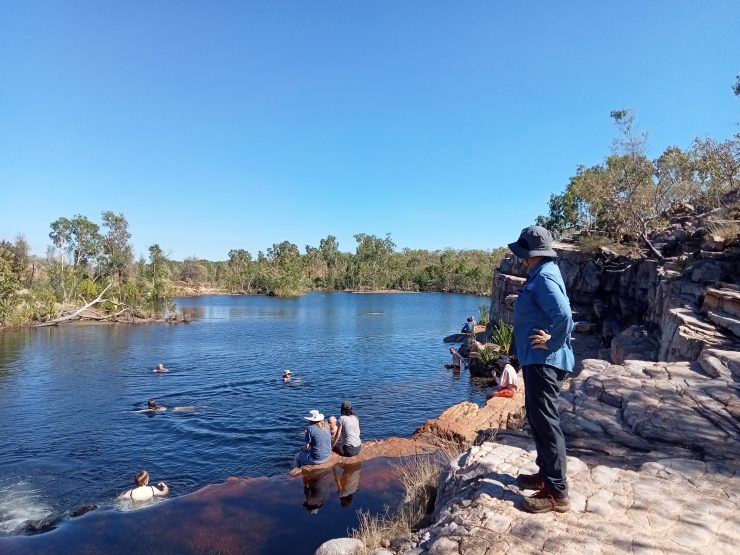
While on tour, we have plenty of chances to jump in for a dip; including Mataranka Thermal Pools, which have the cleared blue water you can imagine, and is visually striking amidst all the greenery. A benefit of dry season is that swimming is possible vs. during the wet season, where rivers and creeks may become dangerous to wander into.
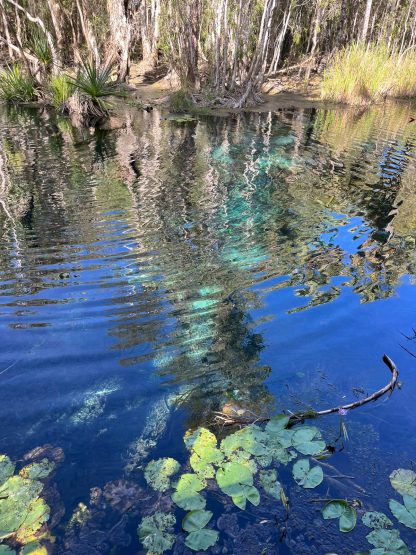
Ancient Rock Art
Visiting remote and restricted rock art galleries at Ubirr and Nourlangie is almost guaranteed during the dry season. These sacred sites offer a glimpse into the rich cultural heritage of the park’s Indigenous custodians, and due to flooding on the roads during the wet season, may not be accessible. This happened as recently as 2023, when tracks into Kakadu National Forest were closed due to floods.
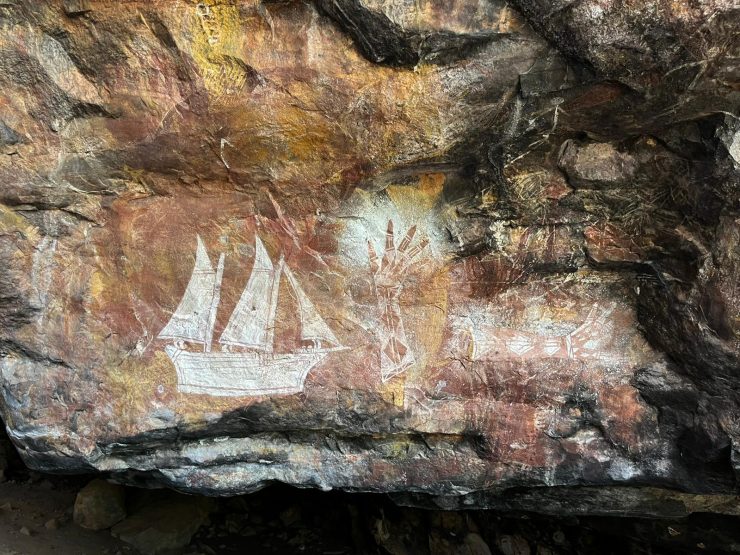
Experiencing the cultural heritage of the area, including rock art and cultural sites of significance, is such a huge reason to visit – so having any of these kept off limits is a shame.
Vibrant Wildlife
As water sources become more concentrated, wildlife viewing opportunities abound. Kakadu is home to a plethora of birds, reptiles, and mammals that congregate around waterholes and rivers, making it a fantastic time for nature lovers.
Some wildlife to look out for include:
- Agile wallaby
- Crocodiles
- File snakes
- Flatback turtles
- Flying foxes
- Leonhardt’s grasshoppers
- Northern brown bandicoots
- Northern quolls
- Pig-nosed turtles
- River sharks
- Wallaroos
- Dingoes
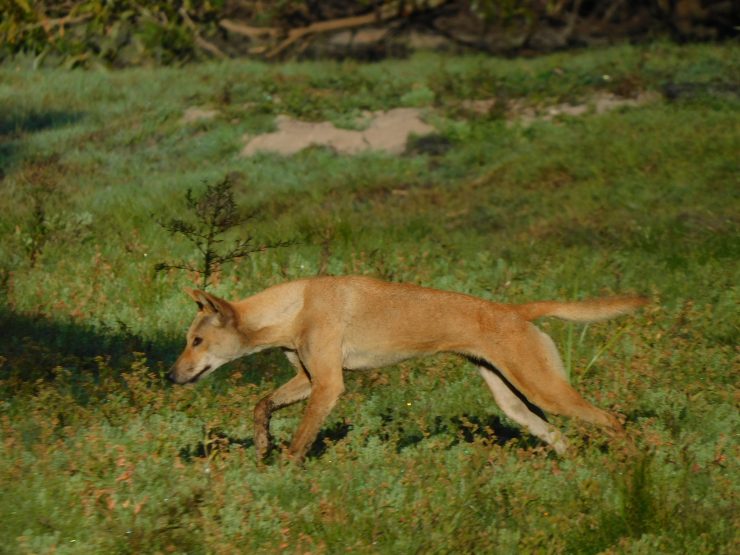
The Wet Season (November to March)
Though our tours run during the dry season, the wet season in Kakadu is a spectacle of its own. Known as ‘Gudjewg’, this period brings life-giving rains that transform the landscape into a lush, vibrant ecosystem teeming with life. While it’s mainly inhospitable, has high humidity, which makes it difficult to walk long distances, and walkers should be prepared for monsoon rain – there are some pros.
Unique Aspects of the Wet Season:
Lush Landscapes
Kakadu transforms into a vivid green during the wet season. The native Speargrass can shoot up over 2 meters, creating a stark contrast against red soil.
Dramatic Waterfalls
With the rivers swollen, Kakadu’s waterfalls become thunderous marvels. The opportunity to see these natural wonders from a scenic flight is an unforgettable experience. Most waterholes will be closed due to crocs moving around with the rains. When it floods, they may swap waterholes, and then at the beginning of the dry season, the rangers will begin to manage them, which means setting traps and moving them until they deem a waterhole safe.
Jim Jim Falls and Twin Falls are two iconic cascades that roar with energy during this time, creating a dramatic sight against the lush backdrop of the park.
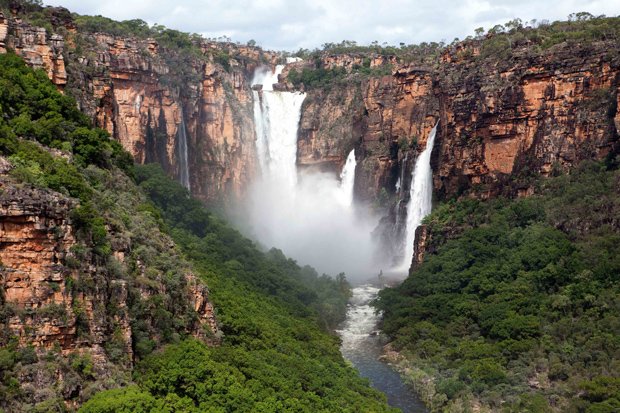
Breeding Wildlife
The wet season is a critical time for wildlife, with many species breeding and spreading across the wetlands. Although you won’t find concentrations of wildlife in the dry season the plethora of bird species to the iconic saltwater crocodile makes Kakadu truely feel alive at this time.
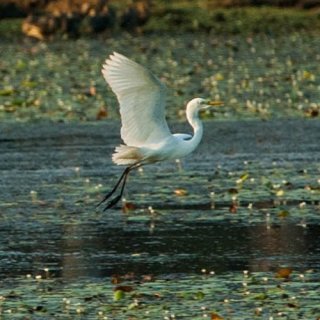
Experience Kakadu with Inspiration Outdoors
Whether you join us in the dry season, or venture independently into the wet, Kakadu National Park offers an unmatched natural experience. Our Kakadu National Park Walking Tour is designed to offer the best of both worlds – the thrill of adventure and the comfort of relaxation. With our expert leaders, comfortable accommodations, and immersive itineraries, you’ll experience ‘nature at your pace’, leaving you inspired and awestruck by the beauty of Australia’s Top End
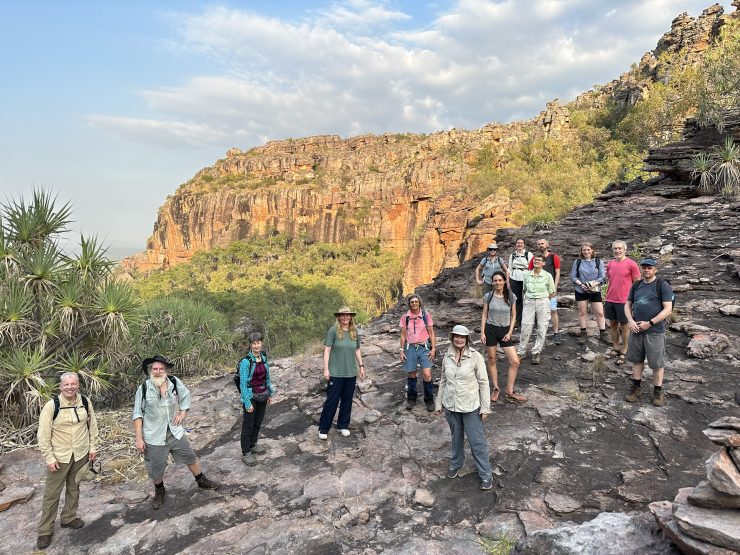
Escape the everyday and embark on a journey to Kakadu with Inspiration Outdoors. Let us show you the wonders of this ancient land, where every step tells a story, and every vista awakens the soul. Be inspired. Explore with us.
